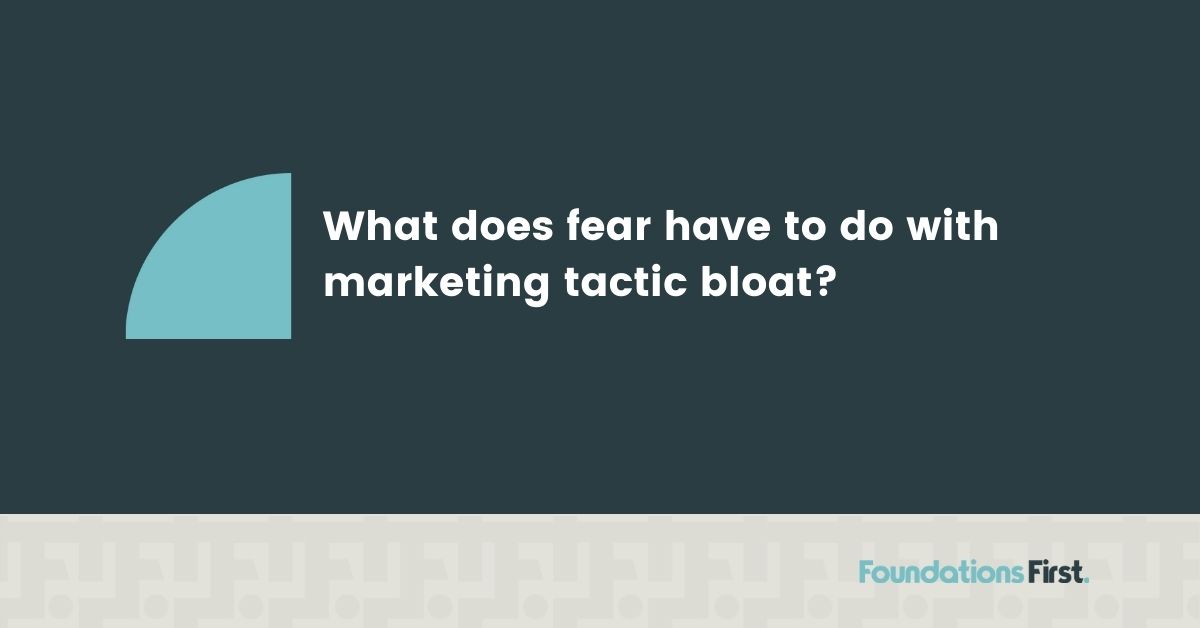When It’s Okay to Stop Marketing Tactics

If you send an email campaign or post on social media but no one is around to care, should you do it again?
Let me ask you this: Do you honestly think your customers or prospects would call you to make sure everything’s okay if you didn’t send out your weekly newsletter? Or what if you stopped posting on social media? Do you truly think you’d be missed? If so, how long would it take?
If you aren’t delighting your audience with emails and social posts, then maybe it’s time to give those channels a second look. Figure out how you can use them better, or maybe not even use them at all.
This is when I usually hear an awkward silence or get really concerned looks on a Zoom meeting.
Yes, you actually can NOT send out so many damn emails. Mind blown, right?
And that social agency you hired that’s posting about National Doughnut Day? How painful is it to read a post that lamely ties doughnuts back to your software? Has that agency ever used or demo’d your software? If you cut their budget, could that money be better spent on another tactic?
If you’ve read this far, you’re probably feeling pretty darn uneasy. Let’s talk it out before you send me an angry email.
The fear of missing out (FOMO) is bloating your marketing tactics
Marketing tactic bloat happens…and not because of gluten sensitivity. It happens when you keep adding tactic after tactic without a strategy and without turning off tactics that aren’t performing.
What does fear have to do with marketing tactic bloat?
Fear has everything to do with it. Whether you admit it or not, we use our emotions to make a lot of decisions. If there is an absence of data, emotions are all we have. If we told you to stop posting on social media or cutting your emails way back, here are some objections we’re likely to hear:
Social media objections based in fear sound like:
- “…but we got 2 likes on our post last week.”
- “Won’t we look dead if we don’t post?”
- “But I hired my niece to handle our social media and she really likes Instagram.”
Email marketing objections based in fear sound like:
- “But we’ve done a newsletter for years.”
- “How else are we going to stay top-of-mind?”
- “Our open rates are decent.”
- “We don’t get that many unsubscribes.”
Remove fear from your marketing decisions with data
If tracking and KPIs aren’t measuring the right things, you can’t possibly make an informed decision. Let’s face it—you need data. It’s far easier to decide if your resources might be better spent elsewhere if you know your ROI for each activity.
If you have cold hard data telling you your weekly newsletter is doing jack shit for your bottom line, then you can kill your newsletter with confidence.
Or maybe the numbers are encouraging and you’re seeing some lovely up-and-to-the-right graphs of engagement. If so, it’s time to revisit what you’re doing and spend some time making it even more valuable to your audiences. Let’s ride that train!
What is fear-based decision-making costing you?
Next time you question why you’re doing something…do the math.
Here’s the formula:
[revenue the tactic is bringing in] – [time and money the tactic costs]
Then take it to the next step and ask, “Given that information – and all of the tactics we’ve got onboard – could we spend that money elsewhere and get more ROI?”
It’s really all about opportunity cost. By NOT doing A, you get to do more of B, and get more leads/revenue.
Get it? Do more of what’s working and shut down tactics that aren’t doing anything for you!
Replace fear-based marketing decisions with data-driven decisions
Do you see how tracking, or the lack of tracking, is to blame for fear-based decision making? If you’re making decisions based on your gut, the pet projects will stay in play. They will never get better. And they’ll never die. They will just be there—zombie projects that take up precious time and resources.
We’re data nerds and are always happy to talk through what you should be tracking and how. We can do that during your free strategy call.
Free eBook:
Download Your Guide: 5 Signs You Have Critical Cracks in Your Marketing Foundation
Download your guide and stop cashflow leaks early.
Download Now (PDF)
Michelle Tresemer
Categories
- Analytics and Measurement
- Brand Messaging
- Competitor Analysis
- Content Marketing
- Digital Marketing Strategy
- Digital PR & Events
- Marketing Budgets
- Marketing KPIs
- Marketing News
- Marketing Rock Samples
- Marketing Staffing & Vendors
- Marketing Strategy
- Marketing Tech Stack
- Podcast
- Product Marketing
- Sales Marketing Alignment
- SEO
- Social Media
- Strategic Marketing Partnerships
- Target Markets
- Uncategorized
- Vision & Purpose
- Webmaster








